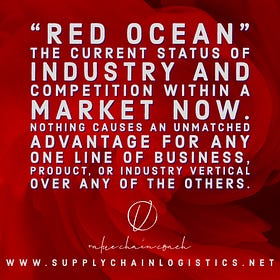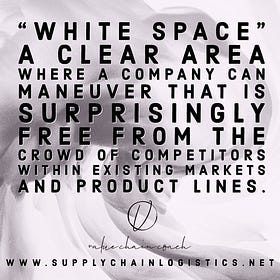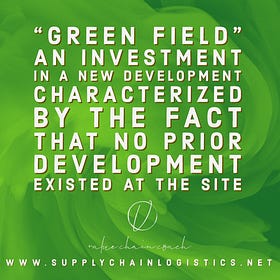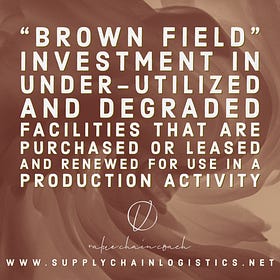The Business Development Strategy Series: All the Colours of the Rainbow
An ingredients list for various Business Strategies.
Strategy in business.
In business the approach to progress can be developed and managed by observation of what’s worked, what doesn’t work, and what might work for specific situation.
Information is available for comparison and discussion with opportunity to learn how the evolution of strategy facilitated companies. Intentionality and innovation are not mutually exclusive. The differences within companies that advance and those that don’t are as different as the colours of the rainbow.
One way to begin, is to walk the “rainbow” and investigate each of these differences in their own light. Explore the terms and their meaning to begin a critical review of well trodden pathways leading towards new and existing advantages in industry.
Management matters. Business leaders must arm themselves with an understanding of their market position and actual potential. Executive teams must discuss investment and decide for themselves whether innovation and training, research and development, cost leadership, design and build, operations or asset management, will hold the secret to their company’s success.
“Blue Oceans”

In a “Blue Ocean” market, businesses venture into new, unexplored markets where no competitors exist. This environment focuses on creating demand rather than fighting for it, leading to rapid and profitable growth. Companies in Blue Oceans often innovate pre-existing technologies, create entirely new industries, or renew old ones, starting from Red Oceans.
The term “Blue Ocean” symbolizes clear waters where a lone shark can easily spot its prey, representing the vast opportunities and minimal competition in these markets. This strategy allows businesses to thrive without the intense competition found in saturated markets.
Qualities:
🐣 New. Does not exist yet.
🌫️ ❔Unknown markets.
0️⃣ 🙅🏿 No competitors.
📊 🎁🎯Demand creation.
😣🥊 🚫No fight to win.
Growth:
Profitable🤑💰 + Fast 🏎️ 💨
Competition:
Few:
🤖🦾Make new industries
Most:
🏗️ Innovate pre-existing technologies
🏖️ Start in red oceans
🔀 Renew old industries
Related Fact:
Named for the 🌊 clear waters 🌊 where a 🦈 lone shark can see their prey 🐡 🐟 🐠 🐙
An Example:
An example of a Blue Ocean industry is Uber in the personal transportation sector. Uber revolutionized the industry by introducing a ride-sharing app that connected drivers directly with passengers, eliminating the need for traditional taxi services and centralized dispatch systems.
Uber created a new market in personal transportation by launching an application that was non-traditional. This method of matching served to fulfill both existing transportation customers and independent contractors needs, yet did not exist before. This innovation bypassed existing systems, offering a convenient, competitively priced, and user-friendly experience in a computerized service.
This environment exemplifies a Blue Ocean where Uber established a unique market space with little competition, effectively transforming private transportation services and positioning itself as a leader in the new ride-sharing industry.
“Red Ocean”
In a “Red Ocean” market, the rules of engagement are well-established, and no company has an unparalleled advantage. Competitors exert similar levels of effort for equivalent rewards, often focusing on strategies like low cost, best price, and fast service to attract customers.
The term “Red Ocean” is derived from the imagery of blood-saturated waters during a shark feeding frenzy, symbolizing the intense and cutthroat competition in such markets. This environment requires businesses to continuously innovate and differentiate themselves to survive and thrive.
Qualities:
🤺 Rules of engagement are known
🏃🏼♀️ No unparalleled advantage exists
🏆Competitive effort is the same for the same reward
Competition:
📉 Low Cost +💲 Best Price + 🚛 Fast Service
Related Fact:
Named for blood🩸 🌊 saturated shark 🦈 infested waters 🌊 during a feeding frenzy. 🍽️
A textbook example of a Red Ocean industry is the fast-food market. An abundance of ompanies exist with similar pricing, products and position that all compete fiercely. Each offers minimal differentiation from the next, with McDonalds, Wendy’s, Dariy Queen and Taco Time, offering the same benefits for their customers in convienience and low price.
All companies in the market for Fast Food are consistently engaging in high-profile advertising campaigns, and are constantly innovating their menus to attract customers from the same pool.
This environment exemplifies the characteristics of a Red Ocean, where businesses must continuously fight to maintain their position in a saturated market.
“White Space”
In this context, “White Space” refers to a marketing and sales strategy where there is no competition for customer attention. It involves selling an existing product line or operating within an established industry, and in a market where no comparative product is present.
This approach provides solo access to a prospective market, unimpeded by other advertising efforts. This strategy allows businesses to explore and exploit areas with minimal competition, maximizing their market presence and impact.
The term “White Space” is derived from the concept of the unused portion of a piece of paper, symbolizing the opportunity to write new messages and capture untapped market potential.
Qualities:
🎟️ 💵 Related to Marketing and Sales.
💥📣 No competition for customer attention.
📦📦 Sale of existing product line or industry.
🤷♂️🔍 No comparative product is present.
Competition:
🛍️🤑🛒 Solo access to a prospective market.
☁️☀️☁️Unimpeded by other advertising.
Related Fact:
Named for the unused portion of a piece of paper 📝 to write 🆕 messages on. ✍️
An Example:
A White Space scenario is Warby Parker. Before Warby Parker entered the market, buying prescription glasses online was uncommon. The process was often expensive and inconvenient for the customer, with only a few large retailers available online.
Warby Parker disrupted the industry by offering stylish, affordable eyewear online, with a home try-on program that allowed customers to test frames before purchasing. This approach provided unimpeded access to a prospective market with minimal competition and unimpeded advertising efforts.
In this scenario, Warby Parker exploited a new, customer-friendly way to sell eye glasses by selling them online . No competition was present creating ‘noise’. and they capitalized on a White Space strategy.
“Green Field”
A “Green Field” project involves developing in an untouched, new environment, making it ideal for direct investment. These projects are slated for new development, but many risks are unknown in advance. Profitability can be uncertain due to the high costs of design and construction, and the new capacity is often untested and unverifiable.
These projects require significant technological capabilities, and the total effort is forecasted rather than precisely known. The competitive advantage lies in the future potential, with higher risks offering the possibility of higher rewards. Green Field projects aim to create momentum by testing and validating new concepts.
The term “Green Field” is inspired by the imagery of a lush wilderness, representing both the opportunities and hidden dangers in these new ventures.
Qualities:
🌴🌳Untouched new environment
🆕🎉Slated for new development
💸💲Considered for direct investment
❔🤨 Many risks are not known in advance.
Profitability:
⚠️ Risk exists.
💰 🏭 Costly to design and build.
🙌🏼 New capacity is untested and unverifiable.
🛠️ 🔬🧰 Requires technological capabilities.
🗺️ 🫣 Total effort is forecasted.
Competition:
⁉️📊 Advantage is the future potential.
📈 Higher risk, higher reward.
🚀 Create momentum.
🧪🗒️Test and validate.
Related Fact:
Named for a lush wilderness 🌳🌿 that contains unknown species of green growth 🌱 and hidden dangers. 🐯 🐊🔥
An Example:
A notable Green Field project is the development of Tesla’s Gigafactory. Tesla invested heavily in building this massive manufacturing facility on undeveloped land in Nevada.
The Gigafactory was designed to produce batteries at a scale and efficiency that had never been achieved before, supporting Tesla’s goal of making electric vehicles more affordable. This project required significant capital investment and advanced technological capabilities, as it aimed to create a new capacity for battery production that was previously untested and unverifiable.
“Brown Field”
A “Brown Field” project involves the redevelopment or reuse of under-utilized or decommissioned facilities. These projects typically require modification and adaptive design, making them suitable for direct investment.
The main challenge is overcoming initial inertia, but once this is achieved, the new capacity is predictable, and development is partially established. The risk of cost escalation is lower after initial estimates, and the total effort can be planned effectively. In terms of competition, Brown Field projects focus on reinventing existing systems and improving pre-existing environments to demonstrate new benefits.
The term “Brown Field” is derived from the imagery of damaged or barren land where nothing currently grows, highlighting the potential for revitalization and visible transformation.
Qualities:
🪨🪵 Under-utilized or decommissioned facility
👷🏽🏗️Modification and adaptive design is required
💲Typically considered for direct investment
🛫 Overcome inertia.
Profitability:
📦📦📦 New capacity is predicable
🏚️🧱 Development is partially established
⛔️ Escalation is less risky after estimated
📆🤔 Total effort is planned.
Competition:
✨↪️ Reinvent preconceived systems
💫🔄 💫Improve pre-existing environments
✍️🧾📈Demonstrate new benefit.
Related Fact:
Named for damaged or barren earth 🌾🍂 of a used up field where ⛔️ nothing is currently growing and it’s absence is visible. ☠️🥀
An Example:
A notable example of a Brown Field scenario is the redevelopment of the London Docklands. Once a bustling port area, the Docklands fell into disuse and disrepair by the mid-20th century.
The area was transformed through significant investment and redevelopment efforts, which included modifying existing structures and adapting the design to modern needs. This project turned the under-utilized space into a thriving business and residential district, featuring landmarks like Canary Wharf.
“Purple Cow”
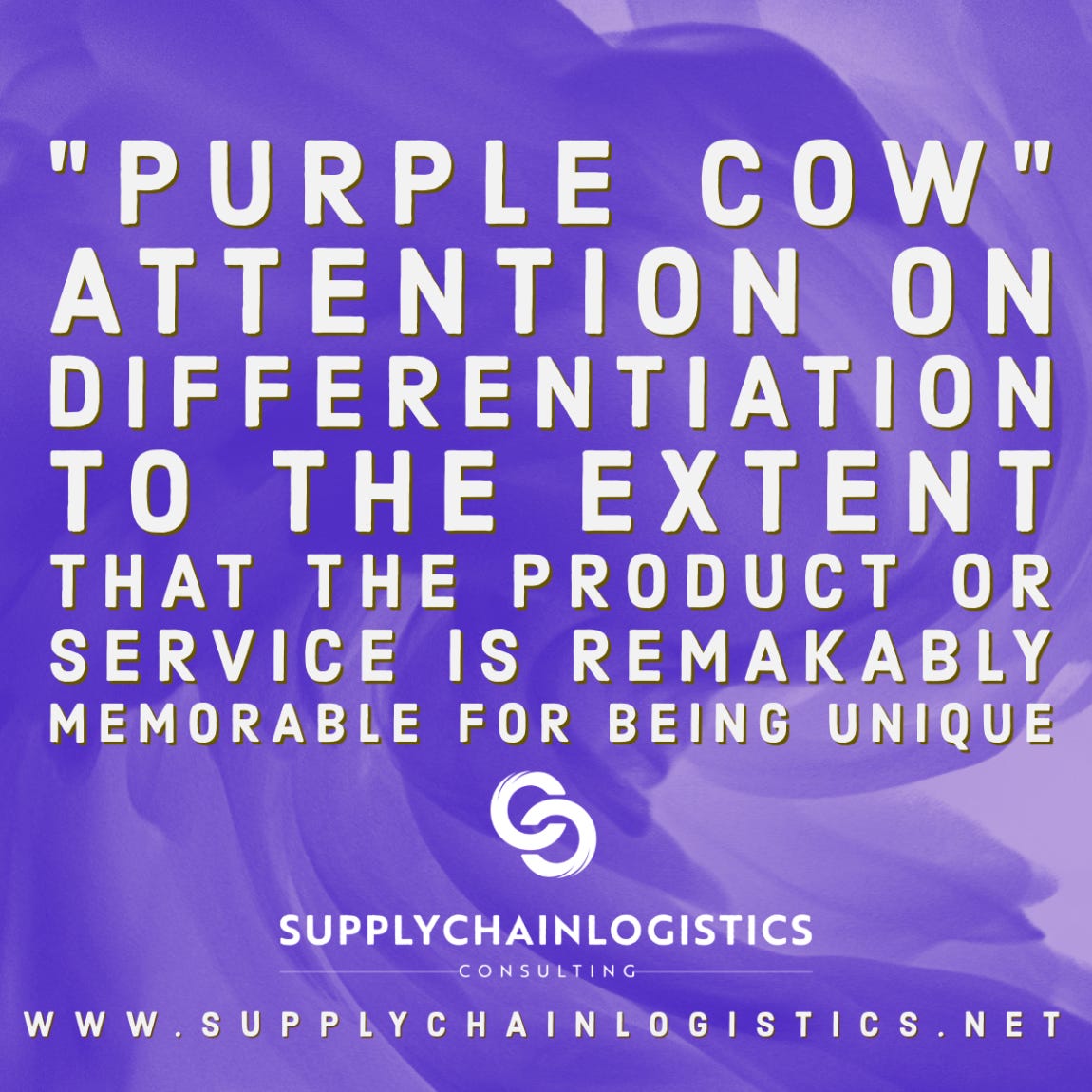
A “Purple Cow” refers to a marketing and sales strategy that introduces novelty within a known environment, without creating a new product or industry. This approach ensures unavoidable consumer awareness and immediate customer identification.
If consumers don’t love it, it’s simply not for them; if they do, they become instant fans. The strategy focuses on expanding differentiation, serving niche industries, and exploiting specific market segments.
The term, coined by Seth Godin, is inspired by the shock of seeing a purple cow amidst a herd of ordinary cows, symbolizing the standout nature of such a marketing approach.
Qualities:
📢🗣️ Related to Marketing and Sales
😒🥸😒 Novelty in a known environment
🏭🏷️ Not a new product or industry
Profitability:
😳 Consumer awareness is unavoidable.
🧲 🧭 Immediate customer identification
Don’t love🤢🤮😖😕 ? Not “for” them.
Instant love ❤️🤩 ? That’s your customer.
Competition:
🦆🦆🦆 🦜 🦆Expand differentiation.
☝️Serve a niche industry.
💎🎟️ Exploit a particular market segment.
Related Fact:
Named for the commonality of a herd of cows 🐄🐄🐄🐄 and instantaneous shock 🤯 to observe one purple cow.🌟🐮🌟(Term was originally coined by Seth Godin, preview for free below.)
An Example:
A notable example of a “Purple Cow” scenario is Apple’s iPhone. When the iPhone was introduced in 2007, it wasn’t just another mobile phone; it was a revolutionary product that combined a phone, an iPod, and an internet communicator into one device.
Its sleek design, intuitive user interface, and innovative features like the App Store set it apart from any other phone on the market. This differentiation created a massive buzz and instant consumer recognition, making it a standout product in a crowded market.
hbr.org. Blue Ocean Strategy by W. Chan Kim and Renée Mauborgne. From the Magazine, October 2004,
(https://hbr.org/2004/10/blue-ocean-strategy)
The Strategy Institute: (https://www.thestrategyinstitute.org/insights/understanding-the-red-ocean-vs-blue-ocean-strategies)
icma.org (https://icma.org/articles/article/brownfields-what-are-they-and-how-make-them-green-again/)
Purple Cow Framework by Seth Godin – Gritist.com
(https://gritist.com/marketing-frameworks/purple-cow-framework-by-seth-godin/)(https://learningloop.io/glossary/greenfield-project)
*As an Amazon Associate, I earn from qualifying purchases.*
At Supply Chain Logistics Consulting our mandate is to improve the way things are done and we would be happy to hear from you. Do you have a specific problem you are solving? A unique solution or a successful story about making a significant change?
Let us know.
Write your response in the comments or send us a message on our contact page. If we get enough responses, we will be highlighting our favorite examples in featured posts so that our readers can benefit from them as well.
If you are interested in hiring a management consultant for your business or project and want to learn more about our management consulting services, please contact us today. We are a professional management consulting firm with years of experience in helping people at businesses like yours to achieve results.
S&Co., Supply Chain Logistics Consulting Inc.

Visit &Subscribe
📩 Sign-up to Company Newsletter 📩
𝕏 Connect ‘𝕏 ‘ @Pro_SupplyChain 𝕏 @SupplyChain.Sale 𝕏 @ValueChainCoach
Join our 🌎 Substack | Facebook | Instagram @SupplyChainLogistics @ValueChainCommunity
LinkedIn Business Page and Value Chain Consultants Group
☎ WhatsApp ☎ Catalogue | Message ☎
🔗Highlights 🔗 SCLCI Link-in-Bio 🔗
👉And don’t forget to share this.


